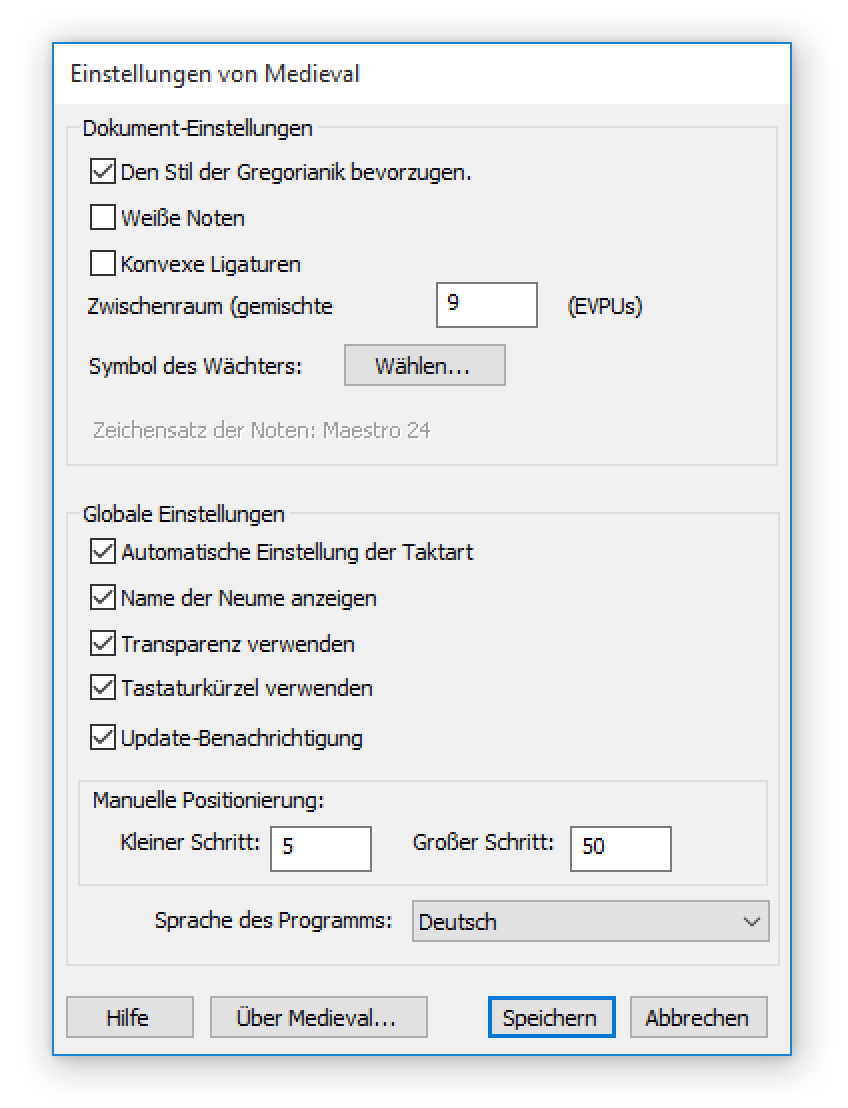The Medieval Options Dialog Box (deutsch)
The Medieval Options Dialog Box (Einstellungen von Medieval)
The Medieval Options dialog box is where you can adjust Medieval parameters for your scores or for the general behavior of Medieval 2.
There are two sections:
Document Options (Dokument-Einstellungen)
(These options can be adjusted for each score.)
- Weisse Noten: check this if you want “white” shapes for notes or ligatures (but you can toogle any time between black and white with the Notehead tool.)
- Gewölbte Ligaturen: check this if you want convex rather than concave ligatures.
- Den Stil Gregorianik bevorzügen: If checked, the high part of the podatus will have specific look.
- Zwischenraum (gemischte Neume): the default space inbetween parts when creating a compound neume.
- Symbol des Wächters: this is where the default custos symbol can be chosen.
- Zeichensatz der Noten: this is normally “Neuma 24” be there might be more font style available in the future.
Global Options (Globale Einstellungen)
(These options are global for all scores.)
- Automatische Einstellung der Taktart: normally, you should keep this option always checked!
- Der Neume Name anzeigen: check this if you want Medieval to send you a friendly notification with the name of the neume just created.
- Transparenz verwenden: Medieval will fade the tool palette automatically if not in focus.
- Tastaturkürzel verwenden: if you currently do not use Medieval, it is recommended to uncheck this.
- Update-Benachrichtogung: check this if you want Medieval to (gently) notify you when an update is available.
- Manuelle Positionierung, kleiner/grosser Schritt: this rules the spaces used by the Nudge Tool.
- Interface language: select your language of choice for Medieval 2 user interface (the other parts of Finale won't be affected!)

![]() See the Options dialog box in other languages:
See the Options dialog box in other languages:
Learn more
- Explore the Medieval menu.
- Explore the Tool Palette.
✶ ✶
✶
Created with the Personal Edition of HelpNDoc: Free Kindle producer

